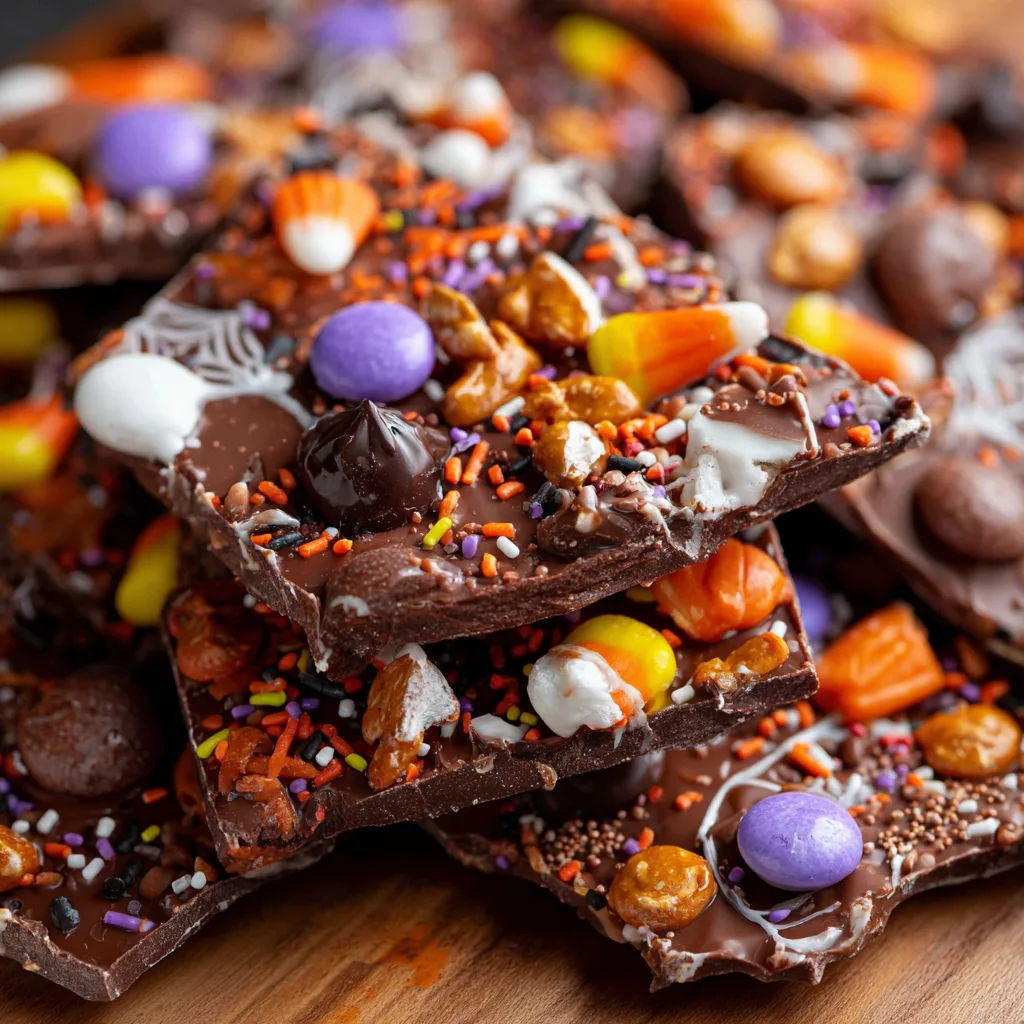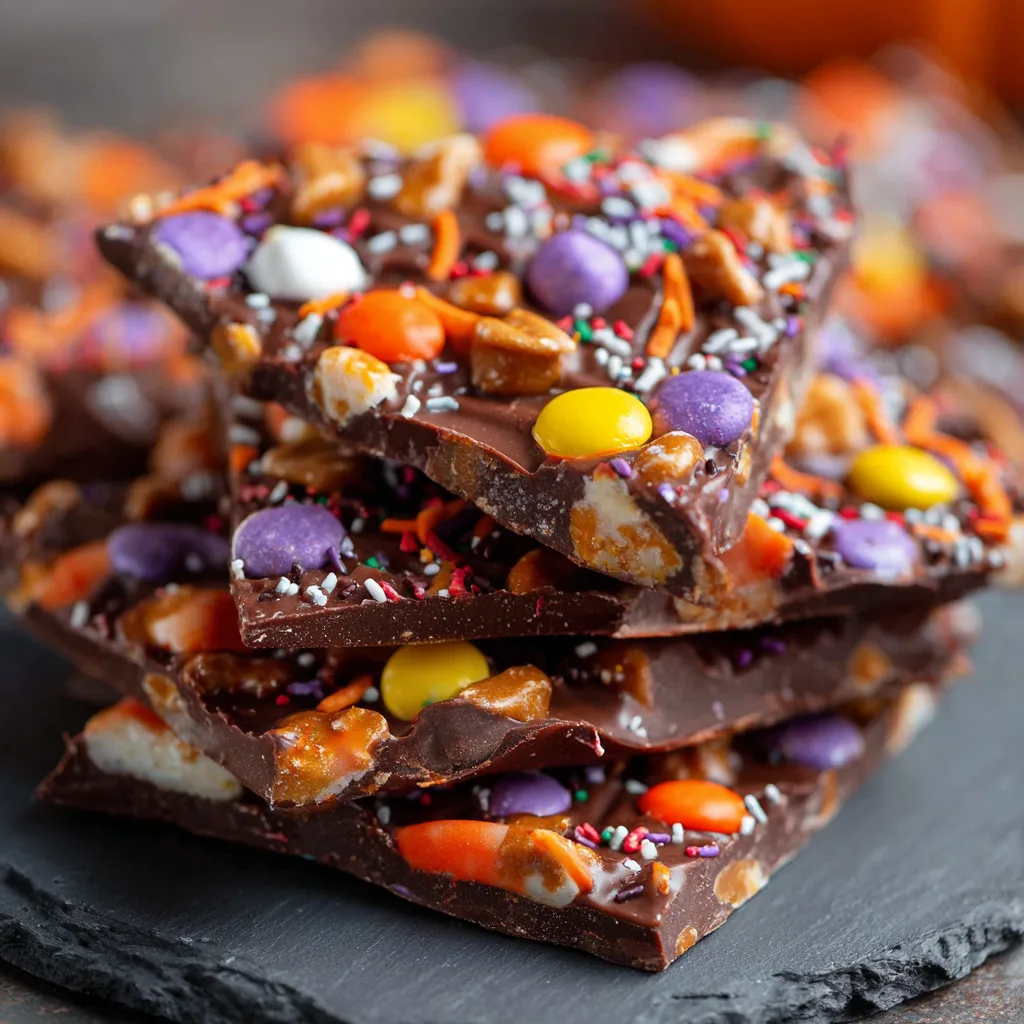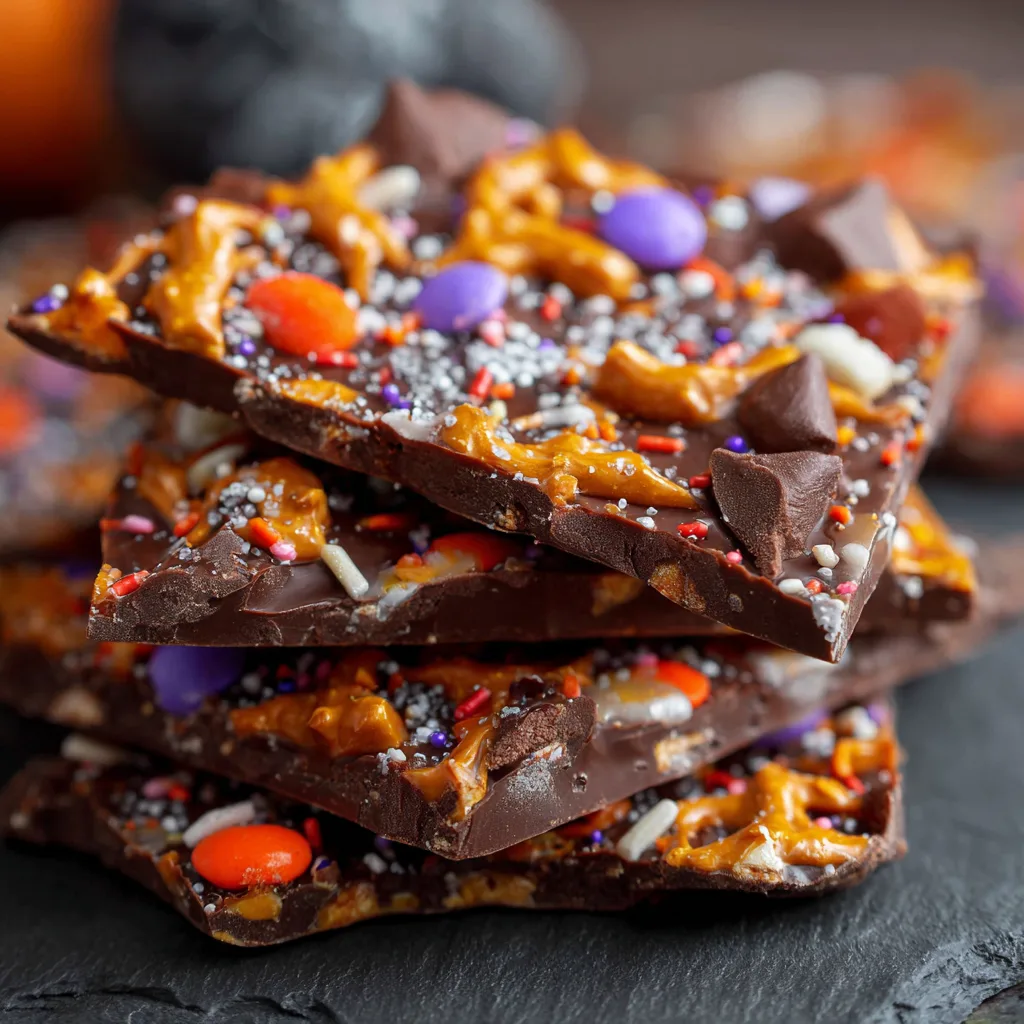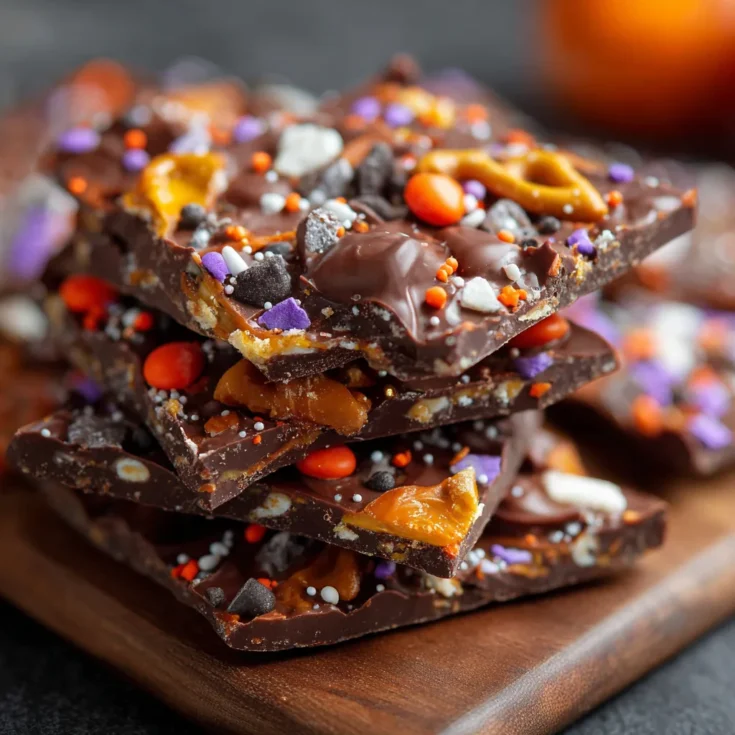Halloween Bark – The Perfect Festive Treat for Spooky Celebrations
Halloween bark stands out as a fun and festive treat that brings the spirit of the season to life. This simple dessert consists of a thin layer of chocolate or candy base, generously topped with colorful candies, nuts, and seasonal decorations. It’s a crowd-pleaser that combines sweet flavors with playful textures, making it a favorite among both kids and adults.
The popularity of Halloween bark surges each year during the spooky season because it offers a quick, customizable way to create themed treats. Unlike complicated desserts, bark requires minimal effort but delivers maximum impact. Its versatility allows you to mix and match ingredients, from candy corn and pretzels to edible glitter and pumpkin spice, making it easy to personalize for any Halloween party or gift.
What truly makes Halloween bark irresistible is its combination of eye-catching colors and delicious flavors. Whether you’re hosting a gathering or preparing treats for trick-or-treaters, this dessert fits perfectly. It doubles as a creative project for families and a stylish addition to any dessert table.
This article will guide you through everything you need to know about Halloween bark. From popular flavor combinations and simple step-by-step instructions to clever presentation ideas and allergy-friendly tips, you’ll find all the essentials to make your Halloween celebration extra sweet. Plus, a detailed recipe card awaits at the end to help you get started with ease.
Classic Halloween Bark Flavors and Ingredients: Traditional Choices for Spooky Sweetness
Halloween bark starts with a solid chocolate base, and the most common choices include dark, milk, or white chocolate. Each type brings its own flavor profile: dark chocolate adds richness and slight bitterness, milk chocolate offers creamy sweetness, and white chocolate provides a smooth, sugary canvas. These chocolates melt easily and harden into a perfect surface for toppings.
Mix-ins add texture and festive flair. Candy corn remains a seasonal favorite, with its iconic orange, yellow, and white hues. Colorful sprinkles introduce crunch and whimsy. Pretzels add a salty contrast that balances the sweetness, while chopped nuts bring crunch and depth. Seasonal candies shaped like pumpkins, ghosts, or bats complete the Halloween vibe, making the bark visually exciting and fun to eat.
Creative and Unique Halloween Bark Variations: Gluten-Free, Vegan, and Flavor Twists
For those with dietary restrictions, Halloween bark offers plenty of flexibility. Gluten-free versions simply swap out any wheat-based toppings for naturally gluten-free treats like nuts, seeds, or gluten-free candy. This ensures everyone can enjoy the festive snack without worry.
Vegan and dairy-free bark options use plant-based chocolate alternatives, such as coconut or almond milk chocolates. These choices keep the bark creamy and rich while avoiding dairy. Some even use dark chocolate naturally free of dairy.
To surprise your guests, try spicy or savory twists. Chili chocolate bark pairs rich cocoa with a hint of heat, adding excitement to your dessert table. Seasonal flavors like pumpkin spice, caramel drizzle, or peppermint extract transform the bark into a holiday-themed experience. These subtle flavor boosts keep the bark fresh and memorable.
Color and Decoration Ideas to Make Halloween Bark Stand Out: Bright, Bold, and Beautiful
Visual appeal matters when it comes to Halloween bark. Colored melts, available in orange, green, purple, and black, help craft spooky designs or vibrant layers. Adding a few drops of food coloring to white chocolate melts allows you to customize hues for unique effects.
Decorate the bark with edible glitter, which sparkles under party lights, creating a magical look. Candy eyes give the bark a playful, eerie character. Themed sprinkles in shapes like bats, skulls, or pumpkins add texture and reinforce the Halloween spirit.
When presenting Halloween bark, packaging and display elevate the experience. Arrange pieces on a decorative platter or wrap in clear cellophane tied with festive ribbons. These simple touches make the bark perfect for gifting or as a standout centerpiece at any Halloween party.





